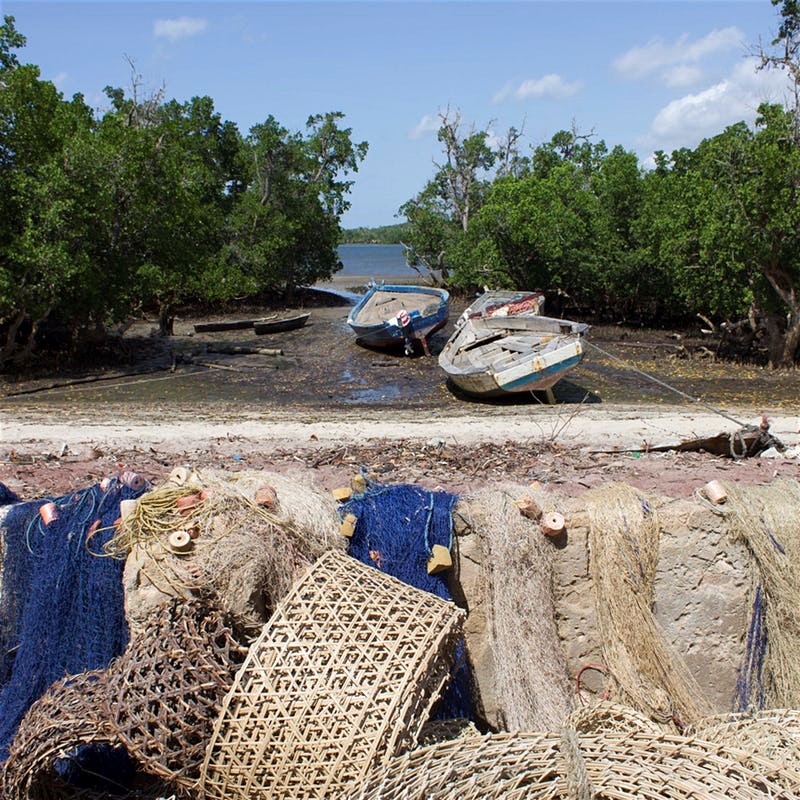IW:LEARN just posted Blue Forests – healthy oceans, healthy communities

Blue Forests, the coastal and marine ecosystems that including mangrove forests, seagrass meadows and saltwater marshes, support livelihoods and wellbeing of millions of people across the globe. They help us fight the global climate challenge by storing and sequestering atmospheric carbon. But for island and coastal communities around the world, they are also vital for the many ecosystem services they provide, including fisheries and aquaculture, coastal protection, fuel (firewood, charcoal) and raw materials (timber), water purification, cultural identity, and tourism and recreation.
The GEF Blue Forests Project is providing the first global-scale assessment of the values associated with coastal carbon and ecosystem services in order to achieve improved management of coastal ecosystems. Although advances have been made in recent years, there are still many challenges to harnessing these values to support improved ecosystem management through payments for carbon offsets and other options. The Blue Forests Project is working to address some of these challenges through research and on-the-ground demonstrations, providing tools, information and knowledge for greater global application. This four-year project is an initiative of United Nations Environment Programme (UN Environment) and is being implemented by partners in Ecuador, Madagascar, Mozambique, United Arab Emirates, Indonesia, Kenya, Thailand, Dominican Republic and the United States.
By undertaking activities that support healthy coastal and marine ecosystems, the Blue Forests Project has made strides in promoting a blue economy approach and helping nations improve their environmental security. Research is a key foundation of the Blue Forests Project and the field studies being conducted help support the ecosystem services activities. The Madagascar intervention installed the first mangrove Rod Surface Elevation Tables (RSETs) in Africa. RSETs are used to identify the vulnerability of the mangroves to sea level rise and to study changes in sediment elevation following mangrove deforestation for charcoal production. Other field work will soon occur in Thailand to make a comparative assessment of greenhouse gas (GHG) flux from degraded seagrass and mangrove ecosystems. Research will compare degraded seagrass and mangrove ecosystems with healthy reference sites in an attempt to understand how degradation impacts rates of atmospheric GHG flux.
In Ecuador, for example, the government issues mangrove concessions as a way for local communities to access to mangrove resources. These agreements allow local associations make use of natural resources, including the consumption and merchandising of fish, mollusks, clams, cockle and crabs, in exchange for applying sustainable management practices and complying with environmental procedures. This program has been followed up with the Socio Manglar Program which seeks to enhance mangrove conservation through livelihood improvement of communities. The goal of Socio Manglar is the incorporation and strengthening of the conservation agreements of at least 100,000 ha in four years. The Blue Forests Project is providing information to enhance the both the mangrove concessions and Socio Manglar incentive through the inclusion of key ecosystem services as blue carbon and coastal protection.
In Vanga Bay, Kenya, Blue Forests is supporting the development of a new Blue Carbon offset project modelled after Mikoko Pamoja, the small-scale carbon offset facility in Kenya. Started in 2013 at Gazi Bay, Mikoko Pamoja is validated by Plan Vivo Standards to sell approximately 3000 t CO2over a crediting period of 20 years. The Blue Forests Project is working to provide evidence-based experience that will support replication, upscaling and adoption of the Blue Carbon offset projects by the international community. Population pressure, poor governance, and lack of awareness are the root causes of mangrove deforestation and degradation in the pilot area.
The outputs of the Blue Forests Project may be very timely in helping countries recognizing the importance of their ‘blue forests’. At the June 2018 G7 Summit in Charlevoix, Canada, the leaders of the Group of 7 (G7) agreed on agreed on the ‘Charlevoix Blueprint for Healthy Oceans, Seas and Resilient Communities’. In this statement, leaders committed to a number of actions, including promoting resilient coasts and coastal communities through advocating for and supporting nature-based solutions, such as protection and rehabilitation of wetlands, mangrove, forests, seagrass beds and coral reefs.
For more information, please visit http://www.gefblueforests.org/ or contact the project at gefbf@grida.no
